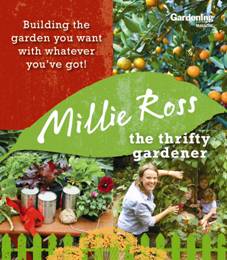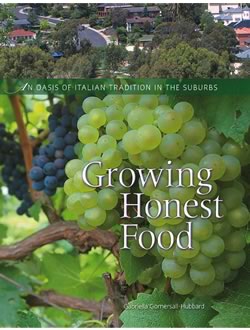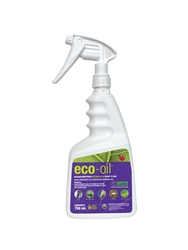
I have been trialing Eco-oil from Eco-organic Gardening. Although I like to make my own sprays when necessary, I also recognise that sometimes we don’t have time to do this, so having a bottle of certified organic spray on hand is a good idea. Eco-oil is registered for use against mites in particular but also as a general pesticide. It will help to control scale, aphids, whitefly and citrus leafminer. It works by smothering the pest so won’t hurt bees or ladybird beetles, as long as you don’t spray them. And there is no withholding period so fruit and vegies are safe to harvest. I love the fact that this company is Australian owned and operated, so by buying this product you are supporting Australian workers and an Australian company.
The new Eco-oil spray has been enhanced with organic compounds (they call it HIPPO enhanced) from plants that will attract beneficial insects. As Steve Falconi from Eco-organic says a 3 year research project with Charles Sturt University,’ Investigated the natural defence mechanisms of plants, in particular the way plants produce volatile organic compounds when being attacked by pests. These compounds act as SOS messages to beneficial insects letting them know that tasty snacks are on nearby plants! A whole range of beneficial insects are attracted including ladybeetles, lacewings, hoverflies and parasitoids. ‘
I have used it against mites on my bay tree where it has been very effective, and have been testing it on aphids on roses. With these strangely warm winter days the aphids have already appeared. It works really well. I will still start by squashing my aphids but if they get away from me I will spray with this great new product (after checking that the ladybird larvae have not already moved in). Highly recommended. To buy it online go to the Eco-organic website
(The Eco-oil spray was given to me to trial by Eco-organic Gardening)
Review by Penny Woodard
Building the garden you want with whatever you’ve got.
Millie’s personality leaps from every page of this engaging and informative book. In the introduction she says “Experiment, play, plant, cut, kill, compost, dig, and, every now and then , push your luck.” “Your efforts (or lack of them!) can help a garden to thrive or just survive, but don’t stress – tomatoes were making tomatoes well before we got involved.” We so often over complicate gardening and Millie is telling us to just get out there and give it a go. With chapters on planning, designing and building gardens, as well as growing, planting, loving and eating your produce, The Thrifty Gardener is full of fascinating tips as well as careful and sound advice. Millie’s emphasis very definitely reflects the title with suggestions about using found and recycled materials right through the book. In the chapter on growing she looks at bottles for garden edges, wooden pallets to make mobile beds and everything from toasters to polystyrene boxes and food tins as pots. The planting chapter covers plants to grow for fibre and structure, plants for hot spots, for privacy, for birds, for frogs, for windbreaks, for play, for ponds and much more.
I thoroughly recommend this book for both the beginner and more experienced gardener, but especially if you are a do-it-yourself person (most true gardeners are) and/or someone who needs to garden on a small budget. The Thrifty Gardener has a real sense of fun as well as being full of wise thoughts.
Borrow it from your local library, buy it from an independent bookshop or go to the ABC shop to purchase a copy online.
By Millie Ross, $35.00, Harper Collins Publishers
(The book was given to me by the publishers)
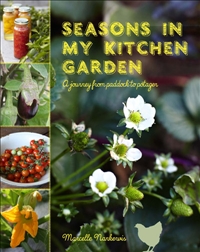 A journey from Paddock to Potager
A journey from Paddock to Potager
Review by Penny Woodward
Some books are practical and useful, some tell a story, some are beautiful to hold and use: Seasons in my Kitchen Garden is all of these and more. The first thing I noticed about Marcelle Nankervis’s delightful third book was the design, which makes the most of the lovely photographs. Delectable close ups of fresh produce, snippets of farm life, and only two photos of Marcelle (I hate this current trend where gardening books and magazines have more photos of the author than they do of the produce or garden!). The book starts with the story of why Marcelle and her family moved to the small farm and this story continues, interwoven between practical seasonal pages about the how to, growing and harvest of fruit and vegetables. She tells of the things that worked, and the things that went terribly wrong. How she wouldn’t put the pigs next to the house again, how her children have become her pest controllers and how they now all wear safety goggles anytime they are working on the farm (you have to read the book to find out why). Continue Reading
 A guide to edible and medicinal weeds in Australia
A guide to edible and medicinal weeds in Australia
This lovely authoritative guide covers 20 common weeds in depth and then another 20 or so more briefly. Everything from amaranth, angled onion and blackberry nightshade to nettles, prickly pear and purslane. The first chapter looks at how to find weeds as well as talking about poisonous plants and nitrates, oxalic acids and contaminants found in weeds. I love the anecdotes about the history of each plant, the way they have been used in different cultures and the really excellent photographs. The final section is full of recipes like green smoothies, weed salads and frittatas, nettle gnocchi and prickly pear pizza. It is not just full of good information, but is also a lovely book to hold and use, fitting neatly into your hand and pocket so that you can easily take it with you when out for a walk. The authors run regular weed walks in Melbourne. Borrow it from your library, buy it from your local independent bookshop or buy a copy online from our store.
By Adam Grubb and Annie Raser-Rowland
Flexicover sewn, full-colur, 166p, ISBN 978186447
Hyland House Publishing, $21.95
Eager to keep their Italian traditions alive after coming to Australia in 1965 Lina and Tony Siciliano started a new life together in suburban Essendon. With only a small garden they yearned to grow their own food so in 1981 acquired a barren block of land in East Keilor where they planted fruit trees and vegetables and raised chickens. Thirty years on and the couple have transformed the site into a profitable business boasting a productive bounty of 400 olive trees, an orchard, vegetable garden and their Rose Creek Estate vineyard.
Taking a month by month approach author Gabriella Gomersall-Hubbard has documented the family’s sustainable way of life from preserving – think big tomato day and sausage making – to producing olive oil and wine. Colour photos throughout capture the essence of the Siciliano’s seasonal activities in the garden and kitchen while traditional recipes reinforce that achievable goal of growing organically, knowing where your food comes from and ensuring low food miles. Try a spicy pasta with potatoes and cavolo nero or the slow cooked capretto with fresh peas.
Review by Penny Woodward
This lovely book is full of delights. For those of us lucky enough to have visited Rose Creek Estate, to have met Tony and Lina, and eaten their food, this book is a wonderful evocation of their lives and lifestyle. Continue Reading
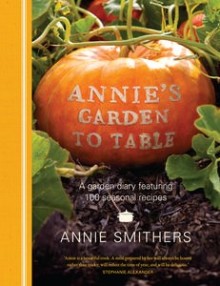 A garden diary featuring 100 seasonal recipes
A garden diary featuring 100 seasonal recipes
I felt a real affinity for this book from the very first pages. I love the way Annie admits her mistakes and uses them to learn for the following years. Very much a cook first and a gardener second, as Annie says ‘It became obvious within minutes of discussing the way forward that anything I thought I knew about gardening was not going to be very useful and this was an opportunity for me to learn not to instruct or dictate.’ And this is what she does. With the help of Simon Rickard, ‘a meticulous plants man with a huge interest in heirloom and old varieties of fruit and vegetables’, Annie established extensive vegetable beds and plantings of fruit trees. It is this fascinating story, combined with the seasonal recipes that make this book special. Annie reminds us that simple foods rely on the quality of the ingredients, and the very best ingredients come from our own gardens, freshly picked. This book is for anyone who grows their own vegies and fruit. It helps you to realise that things do go wrong, but often enough they also go right and that there is real joy in harvesting our freshly grown produce and then cooking them in simple but delicious ways. If you don’t grow your own, but buy from markets or local green grocers, you will enjoy the tales of the vicissitudes of gardening life, and delight in the recipes. Annie finishes the book by saying ‘We should all make the time to grow a piece of food, if only to fully appreciate how hard it can be. This in turn will give us a healthier understanding of the value of good food and its absolute preciousness as a resource.’ With beautiful pictures by Simon Griffiths, this is another book to add to my shelf for constant reference. Borrow it from your library or buy from your local independent bookshop.
Annie Smithers, 256 pages, HB, ISBN-13:9781921382345, Lantern (Penguin), $49.95
Review by Gail Thomas
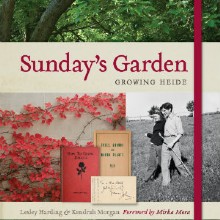 The Heide Museum of Modern Art at Bulleen in Victoria was a neglected former dairy farm when Sunday and John Reed purchased the property in 1934. At the end of their lives and after fifty years of dedication Heide was rich with exotic and native flora and boasted a stunning cottage-style kitchen garden.
The Heide Museum of Modern Art at Bulleen in Victoria was a neglected former dairy farm when Sunday and John Reed purchased the property in 1934. At the end of their lives and after fifty years of dedication Heide was rich with exotic and native flora and boasted a stunning cottage-style kitchen garden.
As art benefactors the Reeds also created a nourishing environment for the artists they championed including Sidney Nolan, Albert Tucker, Joy Hester, Charles Blackman and Mirka Mora some of whose artworks are dotted throughout the book together with historic photos and more recent garden images. Nolan’s poems to Sunday and a dramatis personae of those who contributed to Heide’s rich tapestry and history all add to this fascinating read while a timeline from the 1800’s through to present day documents the couple’s lives, work and garden plantings on the property.
In the 1960’s Sunday’s love of roses is reflected in her rose planting list – Heide’s most famous rose Mutabilis was immortalized in Sidney Nolan’s 1945 painting – Sunday and Susie Bruntion set up Heide Herbs selling herbs propagated in the Heide I kitchen garden and there’s the construction of Heide II, a modernist home on the property which was sold to the Victorian Government in 1980 while the following year Heide Park and Art Gallery is opened.
A comprehensive glossary of trees and plants has been compiled by Heide’s current head gardener Dugold Noyes, in recent times the Heide II kitchen garden and rose walk have been restored and the wild garden is the focus of a major restoration project.
This captivating book will appeal to both art and garden lovers as it explores this intriguing property and its creators.
by Lesley Harding and Kendrah Morgan Miegunyah RRP: $45.00
by Ross McKenzie
Review by Gail Thomas
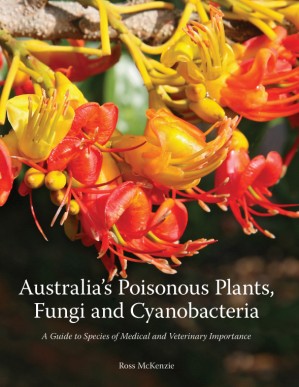 This impressive 976 page tome written in a straight forward accessible format is an invaluable tool for a wide range of people from farmers and graziers, horticulturalists and natural resource managers to landscape architects, agricultural advisers and consultants, veterinarians and horse owners as well as poisons information centres, hospital emergency departments and medical practitioners.
This impressive 976 page tome written in a straight forward accessible format is an invaluable tool for a wide range of people from farmers and graziers, horticulturalists and natural resource managers to landscape architects, agricultural advisers and consultants, veterinarians and horse owners as well as poisons information centres, hospital emergency departments and medical practitioners.
Diligently researched and written by Ross McKenzie, retired veterinary pathologist, toxicologist and research scientist from the Queensland Department of Primary Industries where he diagnosed and researched diseases of livestock for 36 years (1973-2009).
Ross has been honoured with numerous awards throughout his career, has authored over 100 scientific publications, has contributed to several international veterinary text and reference books and is now an Honorary Research Associate of Queensland Herbarium and of Biosecurity Queensland.
Australia’s Poisonous Plants, Fungi and Cyanobacteria is the first full-colour comprehensive guide to the major natural threats to health in Australia affecting domestic and native animals and humans – the overriding aim of the book is to prevent poisoning as there are few effective treatments available, particularly in domestic animals. Continue Reading
Review by Gail Thomas
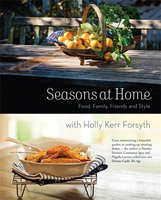 In her latest book house and garden expert Holly Kerr Forsyth has compiled a collection of seasonal recipes to celebrate the bounty of fresh produce from the garden.
In her latest book house and garden expert Holly Kerr Forsyth has compiled a collection of seasonal recipes to celebrate the bounty of fresh produce from the garden.
Each chapter covers a season and along with contemplating a tomato and anchovy tart or rhubarb streusel cake for spring picnic hamper, there are plenty of garden-related hints on bringing flowers indoors, how to keep cut flowers fresh and skillfully arranging them. Summer sees grape and nectarine gratin or making an eye-catching moulded frozen ice bowl dotted with herbs and flowers, a perfect receptacle for serving prawns or an icy fruit sorbet. Getting into the festive spirit there are also details for making decorative flower wreaths, daisy balls and centerpieces for the festive table.
Carrot and ginger soup will bring out the autumn glow while quinces, with pork, baked, in a gooey cake or add to an aromatic autumn fruit pie packed with apples, plums and apricots show off their versatility in a season when it’s also the time to stock up the store cupboard. Preserves, fruit chutney or green tomato and chilli jam and don’t forget to think ahead and plant hyacinths, daffodils, tulips and other bulbs for spring flowering
Winter brings hearty offerings, an array of curries, poached pears with star anise and juniper or stuffed baked apples while you can also turn your hand to making potpourri, studded orange balls or pomanders, there’s even hints on keeping poultry – and the perfectly boiled egg.
Seasons at Home reflects Holly Kerr Forsyth’s unique style, passion for food and practical information on flower arranging, decorating the table to suit an occasion, and growing potted plants to bring indoors.
by Holly Kerr Forsyth, MUP $34.99
Review by Gail Thomas
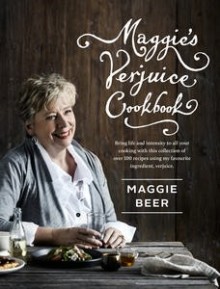 When it comes to verjuice, the juice of unripe grapes, Maggie Beer’s effervescent personality and enthusiasm sum it up. “I just can’t help myself when it comes to verjuice! I use it in place of lemon juice or vinegar to bring the gentlest lift of flavour to everything – from grilled vegetables, meat or fish, pastas, risottos, salads and hearty one-pot dishes to delicate custards, old-fashioned puddings and decadent tarts. I can’t imagine cooking without it.”
When it comes to verjuice, the juice of unripe grapes, Maggie Beer’s effervescent personality and enthusiasm sum it up. “I just can’t help myself when it comes to verjuice! I use it in place of lemon juice or vinegar to bring the gentlest lift of flavour to everything – from grilled vegetables, meat or fish, pastas, risottos, salads and hearty one-pot dishes to delicate custards, old-fashioned puddings and decadent tarts. I can’t imagine cooking without it.”
Verjuice is a virtuoso performer, an acidulant that has been used in Europe and the Middle East peasant cultures for centuries. After reading about this fascinating ingredient in various books, and given her affinity towards sour flavours, Maggie’s interest was piqued. In 1984, with an unsold crop of riesling grapes on their farm, Maggie enlisted the help of a winemaker in an endeavor to produce verjuice rather than see the fruit go to waste. However without a recipe, and some exploding flagons later, a certain amount of fine tuning was obviously warranted! Today Maggie’s verjuice is a kitchen staple in households everywhere and a mainstream product readily available in the marketplace thanks to her foresight, tenacity and pioneering spirit. Continue Reading

